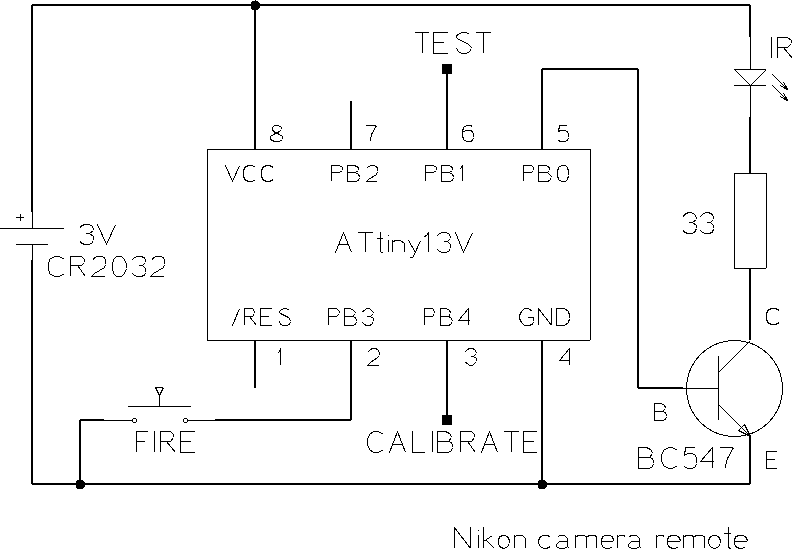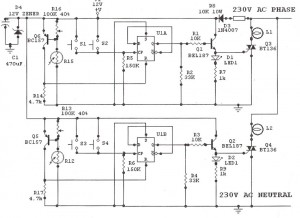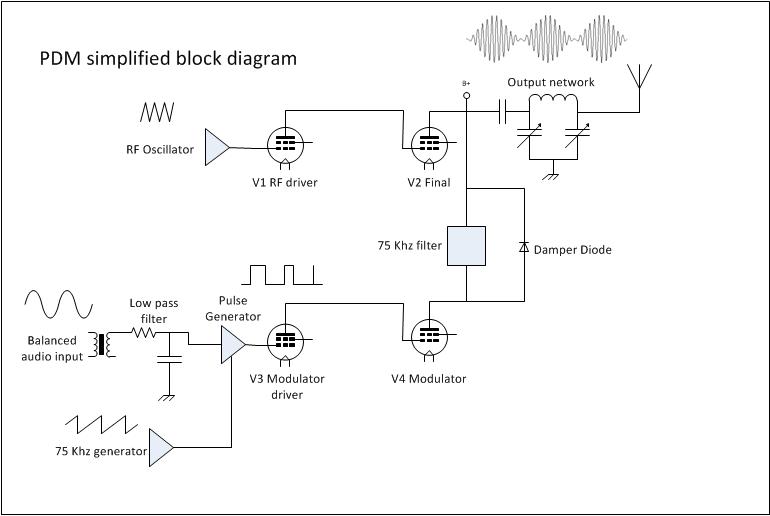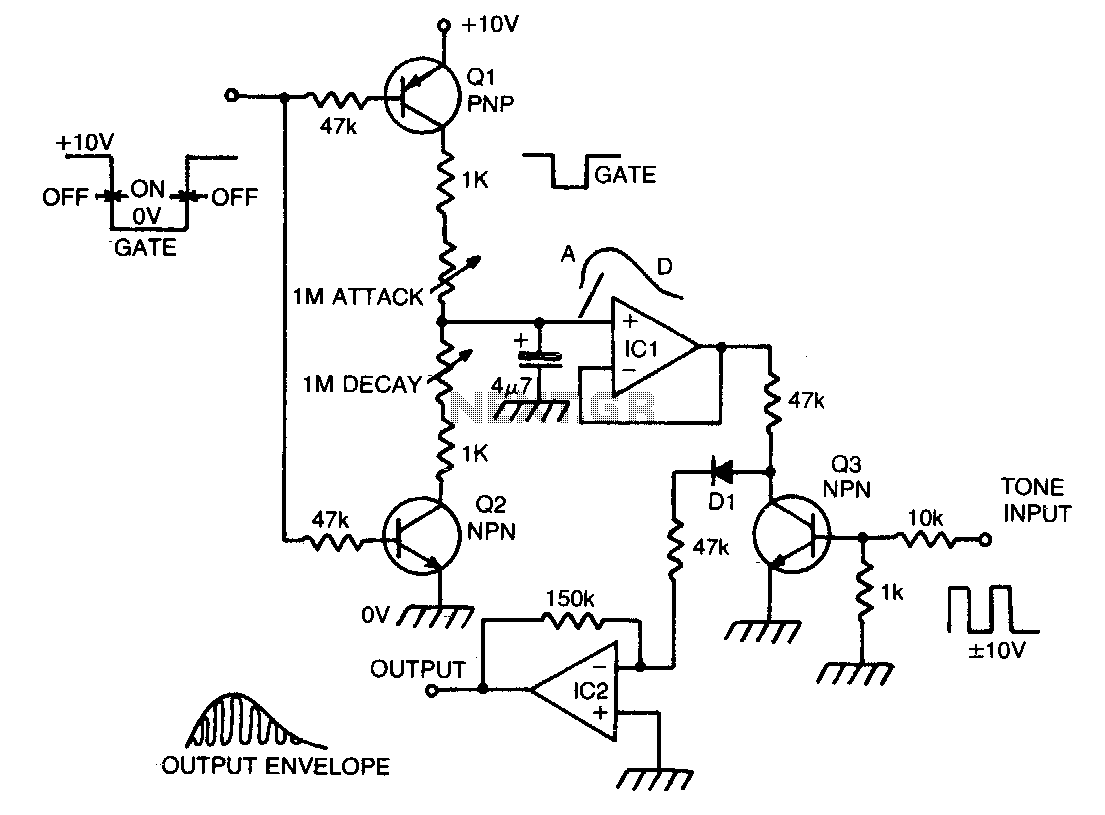
Vintage Remote TV-B-Gone Case Mod
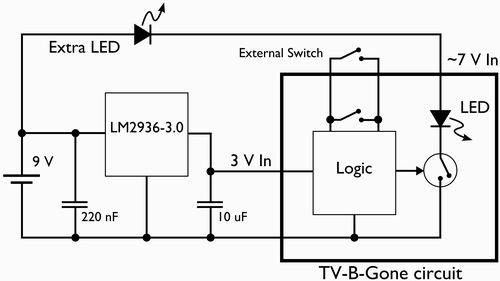
This document outlines the process of modifying a TV-B-Gone device to fit into the casing of a vintage television remote control. The original on/off button of the remote will be repurposed to activate the TV-B-Gone. Additionally, the power supply will be altered to utilize a standard 9 V battery instead of the original lithium coin cells. The TV-B-Gone, produced by Cornfield Electronics, is a simple and efficient device designed specifically to turn off televisions. The device features a Zilog ZLR32300 series microcontroller, a crystal oscillator, a pushbutton switch, a large infrared LED, a small blue LED for status indication, two drive transistors, and three support resistors. The internal design is straightforward, allowing for easy modifications. The original configuration uses three lithium batteries: two in series providing 6 V for the infrared LED and one providing 3 V for the microcontroller. The modifications include connecting an external switch from the vintage remote to trigger the device and using a 9 V power source. An LM2936-3.0 voltage regulator will be employed to supply the necessary 3 V for the microcontroller, ensuring power efficiency and extended battery life.
The TV-B-Gone circuit operates with three main inputs: a 3 V power supply, a 6 V power supply, and a pushbutton switch that activates the device. The logical operation of the circuit can be modeled as a transistor switch that controls the current flow through the infrared LED in a predetermined sequence. The modifications entail integrating an external switch from the vintage remote to serve as the activation mechanism and replacing the original power source with a standard 9 V battery.
The original design utilizes three lithium coin cells, which are less convenient for everyday use. The vintage remote control, with its 9 V connector and battery compartment, offers a more practical solution. To achieve the required voltages for the circuit, the existing infrared LED from the vintage remote will be used in series with the TV-B-Gone's LED to generate the 6 V needed for the infrared operation. For the 3 V required by the microcontroller, the LM2936-3.0 voltage regulator will be integrated into the circuit. This component is selected for its high efficiency, which is crucial for prolonging the battery life of the modified device.
The modification process begins with desoldering the battery holders from the TV-B-Gone printed circuit board (PCB), allowing access to the internal components. The top side of the PCB will be examined for connections, ensuring that the ground connections are maintained appropriately. The circular ground connection on one side of the PCB aligns with the corresponding ground on the opposite side, facilitating a seamless integration of the new power supply and control mechanisms.
In summary, this modification transforms the TV-B-Gone into a more user-friendly device housed within a vintage remote control, enhancing its practicality while retaining its original functionality. The use of a 9 V battery and an efficient voltage regulator ensures that the device remains effective and convenient for everyday use.Here we show you how to hack a TV-B-Gone into the case of a vintage television remote control, such that the original on/off button instead activates the TV-B-Gone. We also modify the power supply so that it runs off of a regular 9 V battery, instead of a set of lithium coin cells.
The TV-B-Gone, manufactured by Cornfield Electronics, is a hacker` s delight: a simple, single purpose gizmo that`s easy to take apart. It`s a super-universal remote with a single purpose: turning off televisions. I got mine for $20 at Fry`s Electronics. I could have bought it elsewhere, but here`s the thing: Fry`s sells televisions! This is very important, because you can try before you buy. The TV-B-Gone is found in the toy section. Grab one off the rack, press the button, and it lights up a little blue LED so that you can see that the battery isn`t dead. Now carry it over to the section where they have rows and rows of televisions, and so that you can really test that it works.
It`s amazing: You can get your money`s worth before you even buy it. The big chip is a Zilog ZLR32300 series processor; a programmable microcontroller designed specially for use in infrared remote controls. (Sheesh, these things are specialized!) There is also a crystal oscillator for the processor, a pushbutton switch trigger, a large infrared LED, a tiny blue LED that blinks along with the infrared LED, two drive transistors one for each LED, and three support resistors.
The design is straightforward, clean, efficient, and provides easy access at all the right points for modification. Nice! There are three lithium batteries in the TV-B-Gone. The two thin lithium batteries on the top side (the side with all the components) are in series to give a total of 6 V.
These provide the high-current drive for the infrared LED. On the bottom side is a single (thicker) battery that provides a 3 V signal that provides the current for the microprocessor. We can make a simplified drawing of the internals like this. The circuit has three inputs: power at 3 V and 6 V, as well as a pushbutton switch that triggers the action of the device.
We can model everything that happens in the device in a simple fashion: A logical circuit that turns on and off a switch (a transistor, really) that allows current to flow through the infrared LED in a predetermined sequence. We are going to make two significant modifications to the TV-B-Gone circuit. The first is that we are going to hook up an external switch, the OFF/ON button from the vintage remote, to trigger the circuit.
Secondly, we will hook up a new power source. The stock TVBG runs off of three lithium coin cells. While the vintage remote TVBG will make a great gift, it is only marginally in good taste to give away a gift that runs on funny little batteries. Besides that, the vintage remote has a 9 V connector and a battery door cover it`s only natural. In order to get our two voltages to drive the circuit, we will use a couple of moderately clever tricks.
The 6 V that drives the infrared LED does not need to be a precise value. To keep things simple and cheap, we will use the original infrared LED from the vintage remote, in series with the LED on the TVBG. To get the 3 V that we need to run the microprocessor, we will use an LM2936-3. 0 voltage regulator ( Digi-key part No. LM2936Z-3. 0-ND ). The LM2936 is a somewhat fancy (and expensive: $2. 50) regulator; it is used here because it is extremely power efficient, and will help the modified TVBG to have a long battery life.
Next, remove the battery holders by desoldering the sides, with either solder wick or a solder sucker. After doing so, the underside of the TV-B-Gone printed circuit board looks like the one shown here. Here is the top side of the TV-B-Gone PCB, after the battery holders have been removed. The big circular spot at the left is connected to the same ground as the circle on the other side. The little square by 🔗 External reference
The TV-B-Gone circuit operates with three main inputs: a 3 V power supply, a 6 V power supply, and a pushbutton switch that activates the device. The logical operation of the circuit can be modeled as a transistor switch that controls the current flow through the infrared LED in a predetermined sequence. The modifications entail integrating an external switch from the vintage remote to serve as the activation mechanism and replacing the original power source with a standard 9 V battery.
The original design utilizes three lithium coin cells, which are less convenient for everyday use. The vintage remote control, with its 9 V connector and battery compartment, offers a more practical solution. To achieve the required voltages for the circuit, the existing infrared LED from the vintage remote will be used in series with the TV-B-Gone's LED to generate the 6 V needed for the infrared operation. For the 3 V required by the microcontroller, the LM2936-3.0 voltage regulator will be integrated into the circuit. This component is selected for its high efficiency, which is crucial for prolonging the battery life of the modified device.
The modification process begins with desoldering the battery holders from the TV-B-Gone printed circuit board (PCB), allowing access to the internal components. The top side of the PCB will be examined for connections, ensuring that the ground connections are maintained appropriately. The circular ground connection on one side of the PCB aligns with the corresponding ground on the opposite side, facilitating a seamless integration of the new power supply and control mechanisms.
In summary, this modification transforms the TV-B-Gone into a more user-friendly device housed within a vintage remote control, enhancing its practicality while retaining its original functionality. The use of a 9 V battery and an efficient voltage regulator ensures that the device remains effective and convenient for everyday use.Here we show you how to hack a TV-B-Gone into the case of a vintage television remote control, such that the original on/off button instead activates the TV-B-Gone. We also modify the power supply so that it runs off of a regular 9 V battery, instead of a set of lithium coin cells.
The TV-B-Gone, manufactured by Cornfield Electronics, is a hacker` s delight: a simple, single purpose gizmo that`s easy to take apart. It`s a super-universal remote with a single purpose: turning off televisions. I got mine for $20 at Fry`s Electronics. I could have bought it elsewhere, but here`s the thing: Fry`s sells televisions! This is very important, because you can try before you buy. The TV-B-Gone is found in the toy section. Grab one off the rack, press the button, and it lights up a little blue LED so that you can see that the battery isn`t dead. Now carry it over to the section where they have rows and rows of televisions, and so that you can really test that it works.
It`s amazing: You can get your money`s worth before you even buy it. The big chip is a Zilog ZLR32300 series processor; a programmable microcontroller designed specially for use in infrared remote controls. (Sheesh, these things are specialized!) There is also a crystal oscillator for the processor, a pushbutton switch trigger, a large infrared LED, a tiny blue LED that blinks along with the infrared LED, two drive transistors one for each LED, and three support resistors.
The design is straightforward, clean, efficient, and provides easy access at all the right points for modification. Nice! There are three lithium batteries in the TV-B-Gone. The two thin lithium batteries on the top side (the side with all the components) are in series to give a total of 6 V.
These provide the high-current drive for the infrared LED. On the bottom side is a single (thicker) battery that provides a 3 V signal that provides the current for the microprocessor. We can make a simplified drawing of the internals like this. The circuit has three inputs: power at 3 V and 6 V, as well as a pushbutton switch that triggers the action of the device.
We can model everything that happens in the device in a simple fashion: A logical circuit that turns on and off a switch (a transistor, really) that allows current to flow through the infrared LED in a predetermined sequence. We are going to make two significant modifications to the TV-B-Gone circuit. The first is that we are going to hook up an external switch, the OFF/ON button from the vintage remote, to trigger the circuit.
Secondly, we will hook up a new power source. The stock TVBG runs off of three lithium coin cells. While the vintage remote TVBG will make a great gift, it is only marginally in good taste to give away a gift that runs on funny little batteries. Besides that, the vintage remote has a 9 V connector and a battery door cover it`s only natural. In order to get our two voltages to drive the circuit, we will use a couple of moderately clever tricks.
The 6 V that drives the infrared LED does not need to be a precise value. To keep things simple and cheap, we will use the original infrared LED from the vintage remote, in series with the LED on the TVBG. To get the 3 V that we need to run the microprocessor, we will use an LM2936-3. 0 voltage regulator ( Digi-key part No. LM2936Z-3. 0-ND ). The LM2936 is a somewhat fancy (and expensive: $2. 50) regulator; it is used here because it is extremely power efficient, and will help the modified TVBG to have a long battery life.
Next, remove the battery holders by desoldering the sides, with either solder wick or a solder sucker. After doing so, the underside of the TV-B-Gone printed circuit board looks like the one shown here. Here is the top side of the TV-B-Gone PCB, after the battery holders have been removed. The big circular spot at the left is connected to the same ground as the circle on the other side. The little square by 🔗 External reference
